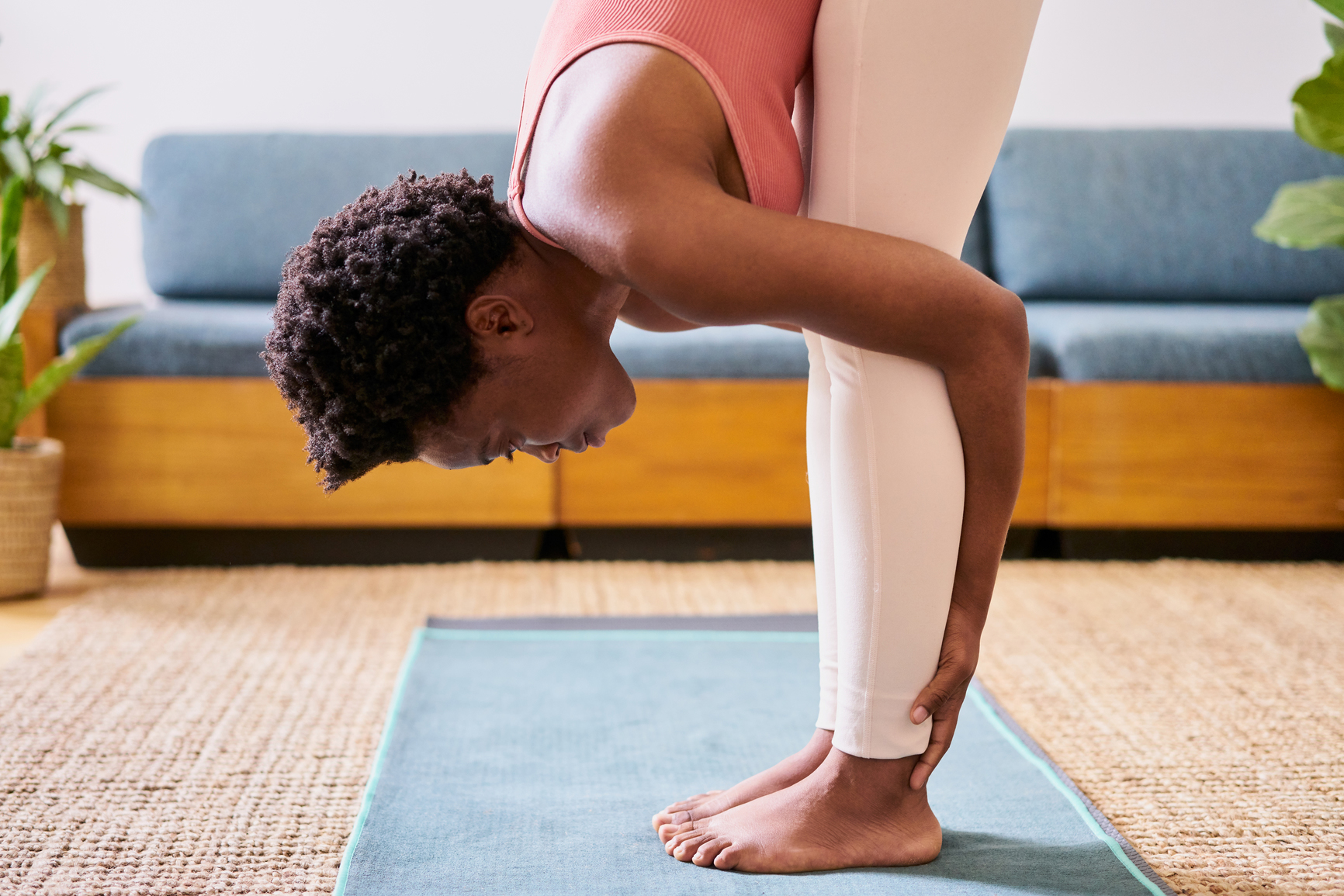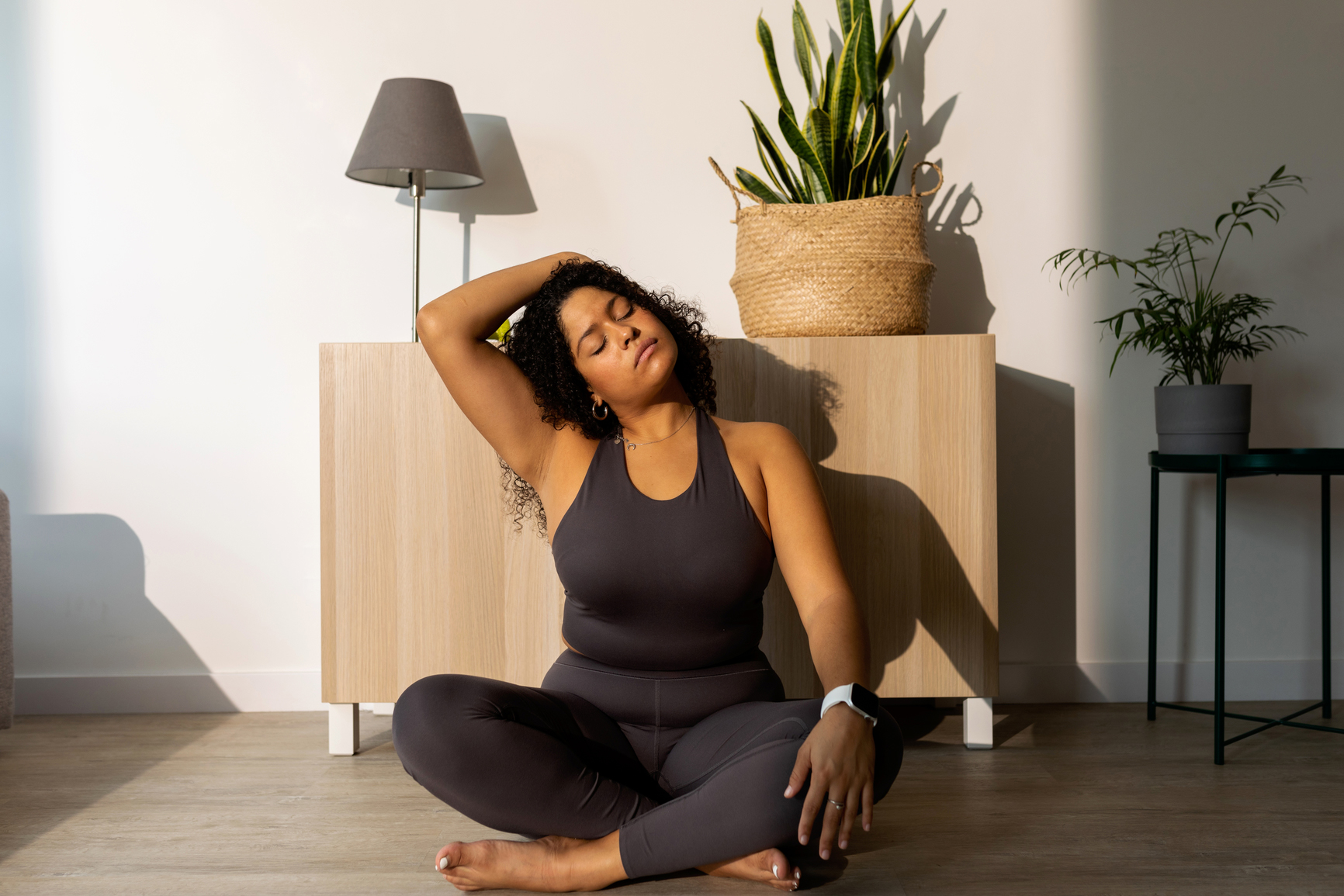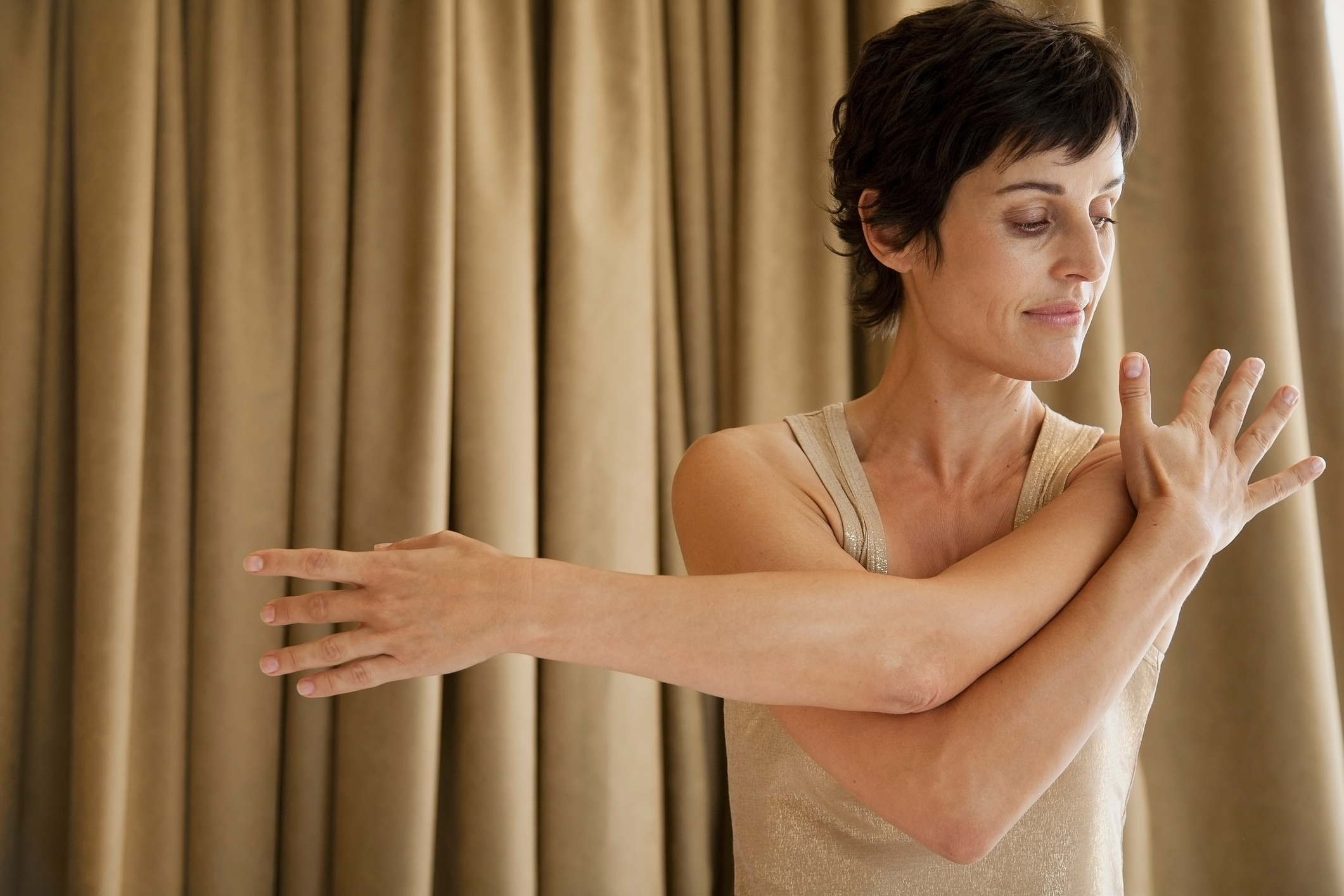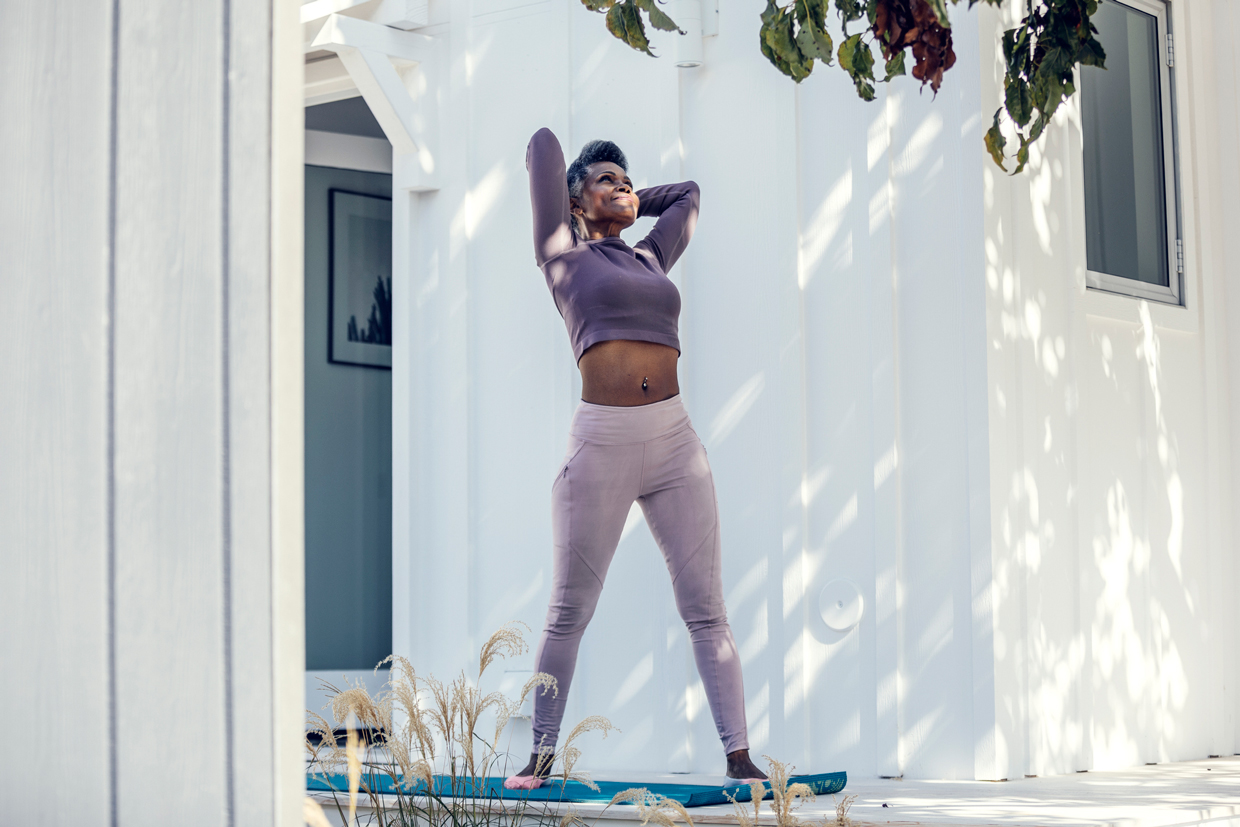Professional athletes and gym rats alike are committed to stretching before and after workouts, and for good reason: Doing so helps increase blood flow — which allows oxygen and nutrients to be delivered to muscles for maintenance and recovery — and supports flexibility and agility.
But if you’re in the mindset that you only need to stretch when you exercise, think again. Taking the time to regularly loosen up and elongate your muscles can do wonders for your broader physical and mental wellbeing in both the short- and long-term. Limber up and get ready to flex.
Let’s get physical
The average individual spends 34 years of their life looking at a screen. Whether it’s the TV, your phone, or a computer, we tend to do this sitting down — a position that wreaks havoc on our joints and causes muscles to tighten, leading to soreness and pain. While the ideal antidote is to spend less time sitting, this is often easier said than done; so stretching could be the next-best solution.
“A study came out in May, where [researchers] got a group of office workers to stretch for 10 minutes, twice a week,” explains Nell Mead, a London-based physiotherapist specializing in people dealing with complex and long-term problems. “They looked at the effect of that on their musculoskeletal pain — so primarily their neck, shoulders, and back — and found that, after three months, even just 10 minutes twice a week was having significant results on reducing their pain levels.”
It’s not just aches and pains that a good stretch can help resolve. Want to boost your heart health? In addition to aiding blood flow, stretching is associated with improved overall cardiovascular function and reduced stiffening of the arteries. Furthermore, Canadian researchers found engaging in regular stretching exercises to be more effective at reducing high blood pressure levels than bouts of brisk walking.
Going through the motions also causes your parasympathetic nervous system (the body’s communication network) to kick into action — which promotes better digestion and encourages your body to enter a state of relaxation. As if all of that wasn’t enough, one study found participants who engaged in a combo of stretching and breathing exercises experienced greater sexual satisfaction. Yes, please.

Show your future self some love
While these immediate benefits are worth celebrating, it’s equally important to consider the bigger picture. “Long-term benefits of stretching include injury prevention, improved physical performance, improved balance and posture, and improved range of motion,” reveals Jessica Mazzucco, a certified fitness trainer in New York City.
All of these are vital components for healthy aging, especially if you want to remain mobile in your later years — and, although we can’t slow the sands of time, we can help them pass more smoothly.
“[Stretching] allows your body to absorb water better, which creates space — particularly in the spinal discs, which are a huge part of the aging process,” Mead explains. “As we get older, we flatten down, we squash, we dehydrate, and our discs get stiffer.”
She continues: “When you’re young and elastic, you don’t realize how much it’s going to impact you when you get older. The younger you start [stretching] and the more you get it into a routine, the easier it gets [as you age].”

Stretching for the mind
Seeing as you can’t physically manipulate your brain, this might come as somewhat of a surprise — but stretching can have some pretty powerful positive effects on your mind, too. “When you stretch, your body releases the feel-good chemicals, endorphins,” says Mazzucco — and these are closely associated with our mood and conditions such as anxiety and depression.
An added bonus? Endorphins “are the chemicals that help reduce feelings of pain,” she notes. One study of patients with fibromyalgia — a chronic condition that causes widespread pain throughout the body — saw those who engaged in regular stretching report lower feelings of pain and improved physical functioning.
And, while a good stretch at the end of the day will help loosen tight muscles, the act itself is also somewhat meditative — which encourages the mind to relax and prep for sleep. “Stretching allows you to focus on your breath and the muscles you are moving, which can help clear your mind and allow [it] to drift away from the day,” explains Mazzucco.

Stretching 101
Ready to make stretching part of your routine? There are a few things to know before you begin.
First off, how long to practice stretches for. “You should stretch at least two to three times a week and spend a total of 15-60 seconds on each stretching exercise. A 20-30 minute session [each time] is sufficient,” Mazzucco says. “This threshold will allow you to see results but also prevent you from over-stretching. It is possible to over-stretch and, when you stretch too much, you risk injury and may pull a muscle.”
Mead agrees it’s important to take things slowly and in moderation. “Being gentle is important,” she states. “I don’t encourage people to stretch too hard and force it. Get to the point where you can feel a stretch — but not pain — and gradually breathe into it.” Listen to your body: If a stretch doesn’t feel right or it hurts to do, stop immediately.
It’s also best to stretch once your muscles and joints have had the opportunity to loosen up. “You should stretch after exercise since your muscles are warm. Warm muscles are safer to stretch because they have a greater range of motion and are more relaxed,” Mazzucco notes.
However, not exercising doesn’t mean you can’t enjoy a stretch session. “I like nighttime stretching,” says Mead — and by the end of the day, your body will have had plenty of opportunities to move and get warm. Plus, she adds, “if we stretch and then lie down to go to sleep, that encourages fluid mobility around the spine.”
As with most things, consistency is key, stresses Mead. “You can’t just stretch for three months and then go, ‘That’s it, I’m done!’, [as] you’re not going to carry on reaping the benefits.”
Stretches to get started with
It’s impossible to stretch every single muscle in your body. However, “by stretching the muscles in the major areas of your body, you can get a full-body stretch that will keep you strong, improve flexibility, and increase your range of motion,” reveals Mazzucco — with the eight major muscle groups being the “chest, abdomen, calves and thighs, butt, back, arms, and shoulders.”
Try these:
Child’s Pose
Seated spinal twist
Wall chest stretch
Hamstring stretch
Hips stretches
Ultimately, “it’s about getting up and moving and taking your body through its full range of motion,” states Mead. “It keeps things healthy.”
We only recommend products we have independently researched, tested, and loved. If you purchase a product found through our links, Sunday Edit may earn an affiliate commission.







